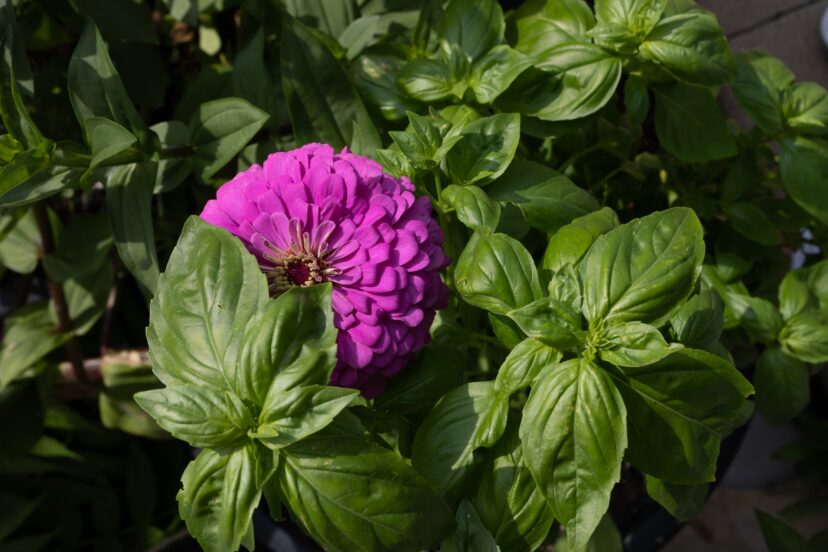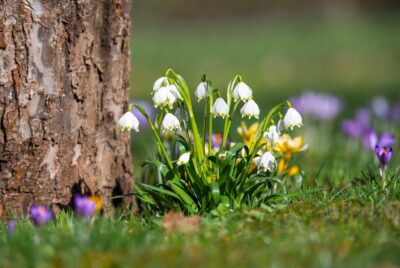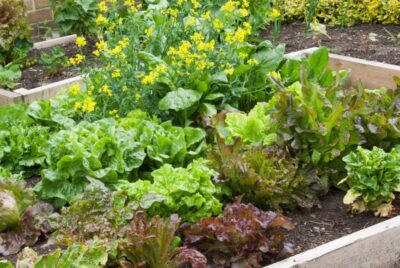Companion Planting: A Green Thumb Guide
Companion planting is a clever strategy for maximizing space in both your vertical and traditional gardens. It involves arranging your vegetables, herbs, and flowers in harmonious groupings, where they not only support each other’s growth but provide a natural deterrent against troublesome insects, all while safeguarding your cherished plants.
In this Article
- Understanding Companion Planting
- Benefits of Companion Planting
- Best Companion Planting for a Thriving Garden
- Pairing Vegetables for Success
- Elevating Your Garden with Herbs
- Flower Blooms in Harmony
- Choose Your Companion Plantings Wisely
Understanding Companion Planting
Companion planting involves planting two plants near each other to create a one-way or mutually beneficial environment. This age-old practice harnesses the power of plant relationships to enhance growth, deter pests, and improve overall garden health. Companion planting is not based on hard facts, but on observations and garden lore found in farmers’ almanacs. There is always an element of trial and error to see what works and what does not.
Benefits of Companion Planting
Companion planting is a secret weapon that can supercharge your yields while minimizing the need for pesticides. This practice involves planting plants to create a one-way or mutually beneficial environment where each member has a role to play. Here are the seven benefits that will transform your garden:
- Pest Deterrence: Imagine having natural insect repellents at your disposal. Certain plants, like garlic, emit odors that are downright unappealing to many pests. By planting this unappealing scent, you can deter unwanted garden pests without resorting to chemical solutions.
- Beneficial Insect Attraction: The allure of companion planting goes beyond pest deterrence. Some plants, like borage, act as irresistible magnets for beneficial insects, including pollinating bees and pest-eating wasps. These allies help maintain a balanced and thriving garden.
- Shade Regulation: Some plants don’t care for the scorching sun. Companion planting allows taller plants, such as corn, to provide cooling shade for plants, like lettuce, spinach, and chard. This simple yet effective strategy shields delicate plants from sun’s rays, ensuring their health and productivity.
- Natural Supports: In the garden, some plants are born climbers, while others prefer to sprawl. Tall plants, such as corn and sunflowers, can stand as living trellises for their lower-growing counterparts like cucumbers and peas. This not only saves space but also promotes efficient growth.
- Enhanced Plant Health: The companionship among plants extends to the soil beneath them too. When one plant absorbs specific substances from the soil, it can alter the soil’s chemistry in favor of neighboring plants. This cooperative exchange fosters healthier, more robust vegetation throughout your garden.
- Soil Fertility: Some plants are soil wizards. Legumes like beans and peas possess the ability to harness nitrogen and convert it into a form that plants can readily use. Similarly, plants like burdock, with their deep-reaching taproots, draw essential nutrients from the earth’s depths, enriching the topsoil for the benefit of their shallow-rooted companions.
- Weed Suppression: The battle against garden weeds can be relentless, but companion planting arms you with a powerful strategy. By pairing sprawling crops like potatoes with towering, upright plants, you create a plant layer that minimizes open spaces—prime real estate for weeds. This natural weed suppression technique keeps your garden looking pristine and weed-free.
Best Companion Planting for a Thriving Garden
Certain plant pairings shine as nature’s pest controllers, pollinators, and protectors. Here’s a glimpse into the world of companion planting and the powerful groupings that can make your garden thrive:
- Basil and Tomatoes: A Dynamic Duo – Basil’s aromatic presence not only enhances the flavor of tomatoes but also repels thrips and deters moths that lay tomato hornworms. Bees are drawn to basil, improving tomato pollination and flavor.
- Dill: The Ladybug Magnet – Dill’s fronds act as a beacon for ladybugs, natural predators of aphids and spider mites. By planting dill, you’re inviting these helpful insects into your garden.
- Garlic: The Scented Guardian – Garlic’s pungent aroma serves as an insect deterrent, repelling a wide array of pests, including aphids, onion flies, ermine moths, and Japanese beetles. Plant it amidst potatoes, lettuces, cabbages, and fruit trees for effective pest management.
- Mint: Aromatic Pest Control – Mint is a natural deterrent for aphids, ants, and flea beetles. However, its vigorous growth can be invasive, so it’s best planted in its own container.
- Nasturtiums: The Caterpillar Diverters – Nasturtiums’ vibrant blooms attract caterpillars away from cabbage, broccoli, and kale, sparing your crops. They also divert black flies from fava beans.
- Parsley: Tomatoes’ Loyal Companions – Plant parsley alongside tomatoes to attract beneficial insects that safeguard and pollinate your tomato plants, contributing to healthier yields.
- Sage: The Carrot Fly Repellent – Sage plays the role of guardian against carrot flies. Plant it around your carrot patch and near cabbage to reduce cabbage moth damage.
- Sunflowers: Support and Shade Providers – Sunflowers aren’t just radiant beauties; they also offer sturdy support for climbing plants like cucumbers and pole beans. Additionally, their towering presence provides vital shade for crops susceptible to sun stress in hotter climates.
- Tansy: Pest-Eating Marvel – Tansy is a magnet for pest-eating champions like ladybugs and predatory wasps. It also effectively repels common troublemakers such as cutworms, benefiting a variety of plants including asparagus, beans, cabbage, carrots, celery, corn, lettuce, peas, peppers, potatoes, and tomatoes. As a perennial, tansy is a gift that keeps on giving in your garden.
Pairing Vegetables for Success
Vegetable gardens can also benefit from companion planting. Some veggie combos bring out the best in one another or prevent common pests and disease problems.
- Corn, pole beans, and squash: Also known as the “three sisters”! Corn—with its sturdy stems, provides upright support for climbing beans. For their part, the pole beans fix nitrogen in the soil, providing essential nutrients for all. And the large leaves of the ground-dwelling squash shade the soil, retain moisture, and block out weeds.
- Cucumbers, sunflowers, and pole beans: Same principal as the three sisters above: the sunflower supports climbing pole beans, while cucumber vines shield the ground.
- Parsley and tomatoes: Parsley attracts beneficial insects that help keep control of damaging insects that prey on tomato plants.
- Basil and tomatoes: Considered “best friends” in the garden. Basil repels thrips and deters the habits of the moths that cause tomato hornworms.
- Sage, with carrots or cabbage: Sage is a proven repellant for carrot flies and cabbage moths.
- Lettuce and radishes: These and other quick-growing plants sown between hills of melons or winter squash will mature and be harvested long before these vines need more leg room.
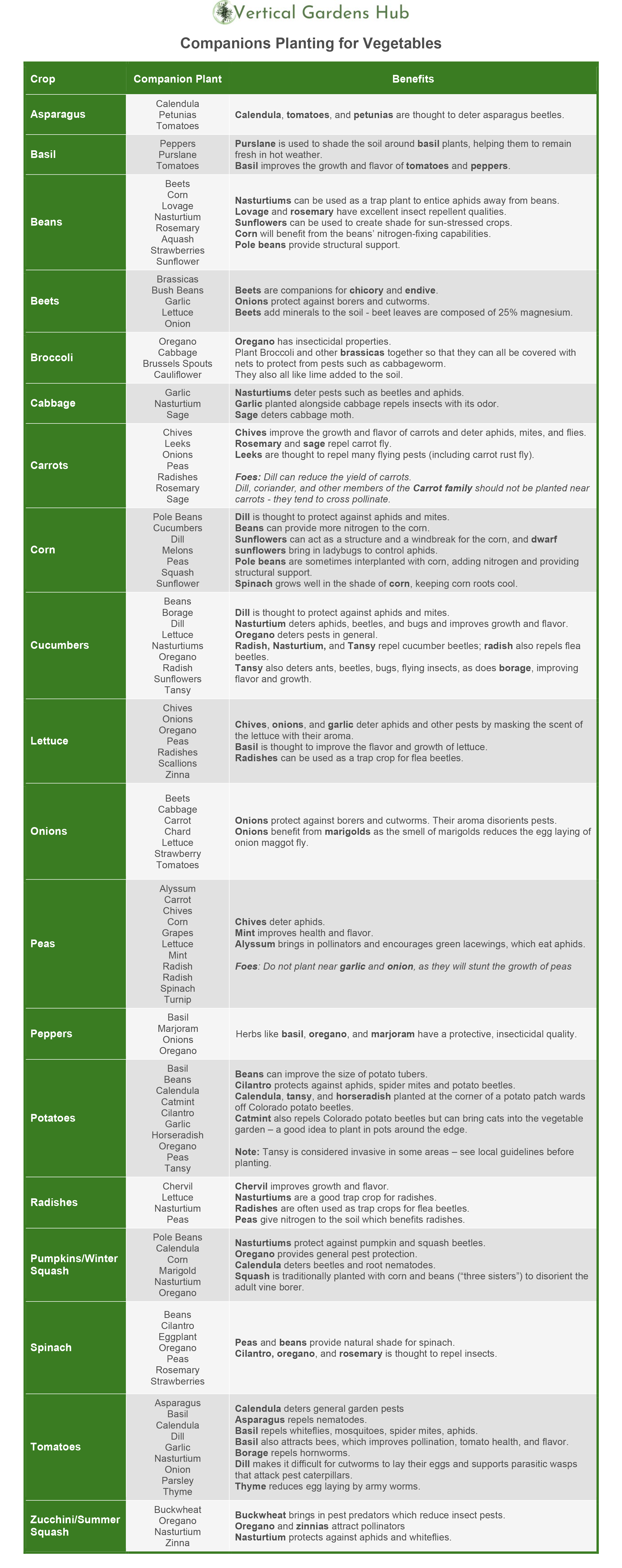
Elevating Your Garden with Herbs
Discover the wonders of herbs as companion plants. Not only do they add zest to your meals, but they also act as sentinels—repelling pests and attract pollinators and other beneficial insects to increase the biodiversity of your garden. From aphids to tomato hornworms, these are just a few of the culinary herbs that can take care of different pests in your garden or attract beneficial insects:
- Basil
- Chives
- Cilantro
- Lavender
- Mint
- Oregano
- Rosemary
- Sage
- Thyme
Don’t forget to allow some herbs to bloom—their blooms are a natural magnet for beneficial insects.
Flowers Bloom in Harmony
Gardens aren’t just about sustenance; they’re also about beauty and provide cut flowers. Certain flowers not only add color but also serve as pollinator magnets and natural pest repellents. Annuals such as nasturtiums, sunflowers, marigolds, and zinnias; perennials such as lavender repel pests and attract beneficial insects.
Bees and other pollinators help spread pollen, encouraging vegetable plants to grow, reproduce, and produce fruits and vegetables. Pollinators favor zinnias, sweet alyssum, daisies, sunflowers, and cosmos.
Petunias are a great companion for beans, tomatoes, and corn as well as repelling squash bugs and tomato hornworms. Marigolds repel cabbage worms who target cabbage, mustard greens, kale, broccoli, brussels sprouts, and related vegetables. Ornamental and edible alliums like scallions, onions, garlic, and chives also deter deer, rabbits, aphids, cabbage looper, carrot flies, and potato beetles.
Choose Your Companion Plantings Wisely
Just as there are plants that thrive together as great neighbors, there are also those that can be detrimental to one another when placed side by side. It’s crucial to consider factors like nutrient requirements, water needs, space, and sunlight when planning both your vertical and traditional garden layout.
Plants that compete for resources, whether it’s nutrients, water, space (both above and below ground), or sunlight, should ideally not share the same garden bed. Additionally, crops vulnerable to the same diseases should be kept at a considerable distance from each other to prevent the spread of illness. The same precaution applies to pests.
Some plants can even actively hinder the growth of others. A classic example is fennel, often regarded as a challenging companion plant that’s best kept in its own designated garden area, well away from other crops.
Also Read:
- Nasturtium Companion Plants: Natures Pest Deterrent
- Vertical Vegetable Gardens:15 Best Veggies
- Vertical Vegetable Gardening
Final Thoughts
Whether in vertical or traditional gardens, companion planting does more than just enhance aesthetics – it fosters a flourishing ecosystem where plants bolster one another, while helpful insects dutifully protect against pests. As you delve into these botanical partnerships, you’ll unlock the potential of nature’s alliances.
Consider the bond between plants much like cherished friendships. Just as we thrive with the right companions by our side, your garden flourishes when plants are thoughtfully paired. So, embrace this natural camaraderie as you nurture your garden, and watch the magic of companion planting unfold.
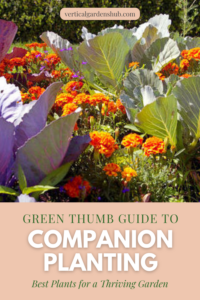
FAQs
Q: What is companion planting, and how does it help my garden?
Companion planting involves strategically arranging vegetables, herbs, and flowers in your garden to support each other’s growth and deter pests. It enhances plant health, minimizes the need for pesticides, and fosters a thriving ecosystem.
Q: Is companion planting based on scientific facts or trial and error?
Companion planting is rooted in centuries of garden lore and observations found in farmers’ almanacs. While not purely scientific, it offers practical and effective ways to improve your garden’s health.
Q: What are the benefits of companion planting?
Companion planting offers a number of benefits, including pest deterrence, attracting beneficial insects, shade regulation, natural support structures, improved plant health, enhanced soil fertility, and weed suppression.
Q: Can you provide examples of plants that make good companions in the garden?
Sure! Some classic examples include basil and tomatoes, dill and ladybugs, and mint for pest control. Nasturtiums divert caterpillars, while parsley attracts beneficial insects. Sage is excellent for repelling carrot flies, and sunflowers provide support and shade.
Q: How can I apply companion planting to my vegetable garden?
In vegetable gardens, consider the “three sisters” approach with corn, pole beans, and squash, or planting cucumbers with sunflowers and pole beans. Herbs like parsley and basil work well with tomatoes, and sage can protect carrots and cabbage.
Q: Are there any plants that shouldn’t be planted together in companion planting?
Yes, some plants can be poor companions due to competition for resources or incompatibility. For instance, fennel is often best kept in its own designated area, as it can hinder the growth of nearby crops.

